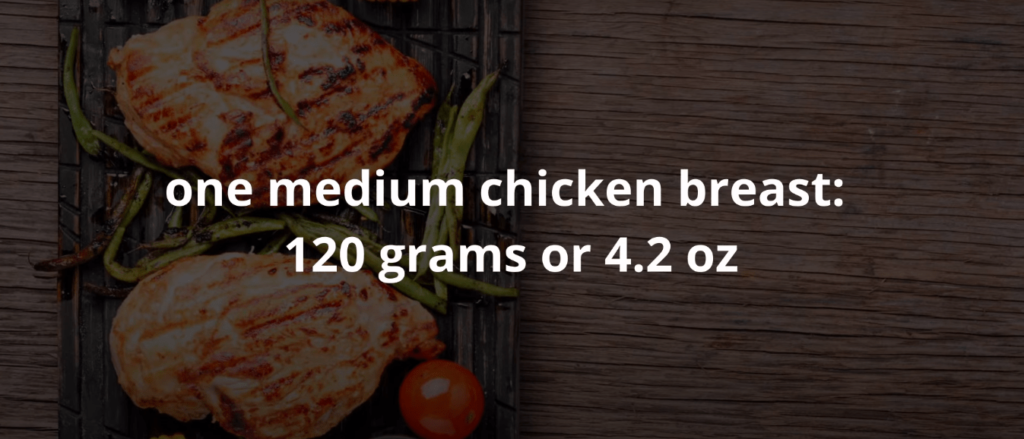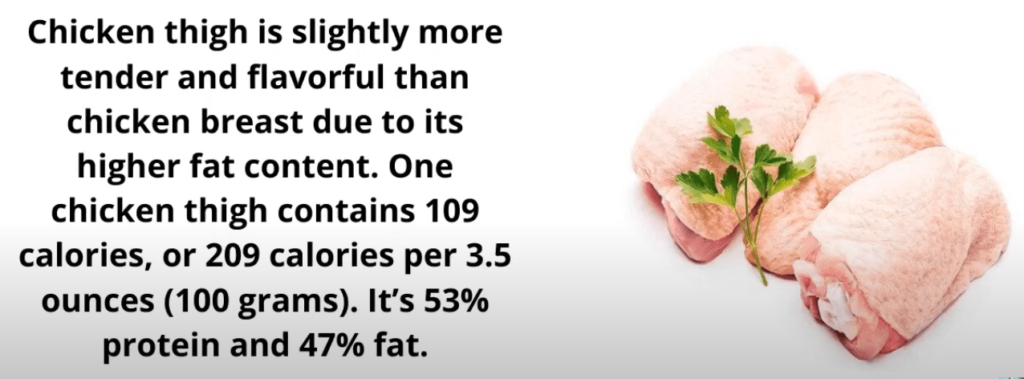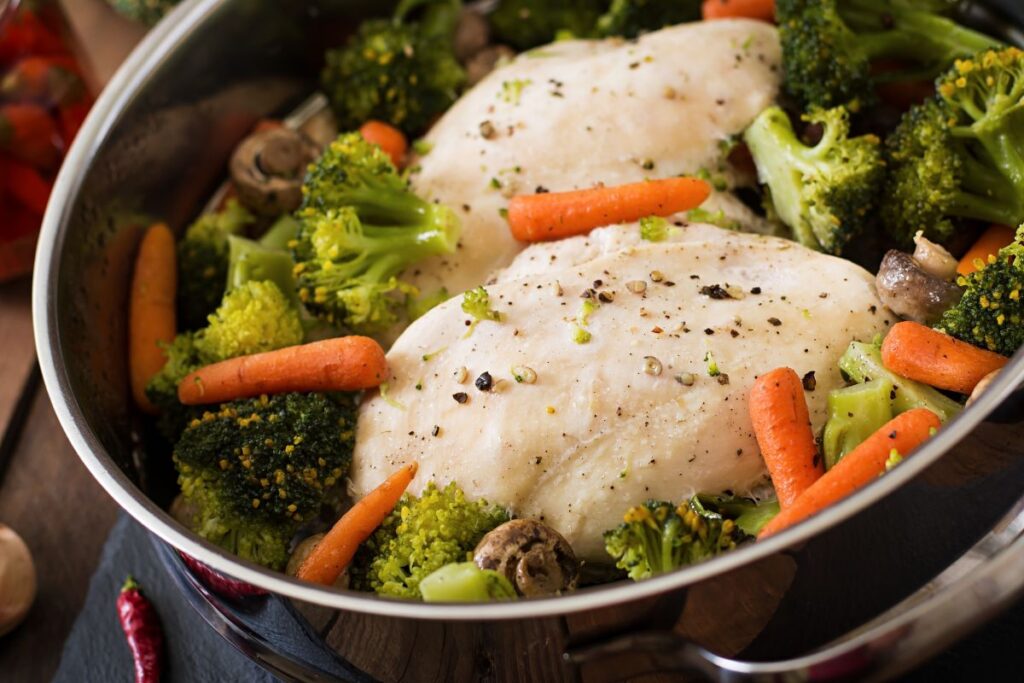Introduction to Chicken Breast Nutrition
When discussing “Calories in Thin Sliced Chicken Breast”, it’s essential to consider not only the nutritional value but also the impact on our diet and health. This lean protein source is a staple in many health-conscious diets, offering a balance of essential nutrients while keeping calorie count low. In this comprehensive guide, we’ll explore the caloric content and nutritional profile of thin sliced chicken breast, making it an invaluable resource for fitness enthusiasts and anyone mindful of their dietary intake.
- Key Nutrients in Chicken Breast
- High in protein
- Low in fat and carbohydrates
- Contains essential vitamins and minerals
- Popularity in Dietary Plans
- Favored in weight management diets
- Integral in muscle-building regimes
- Suitable for low-carb and ketogenic diets
In the context of healthy eating, chicken breast aligns perfectly with the guidelines suggested by ChooseMyPlate.gov, which emphasize the importance of lean protein sources in a balanced diet. This adherence to health standards makes chicken breast an ideal choice for those aiming to maintain a nutritious and balanced diet.
Furthermore, the versatility of chicken breast in culinary applications is remarkable. Whether grilled, baked, or stir-fried, it can be incorporated into a variety of dishes, aligning with different dietary preferences and restrictions. As highlighted by Healthline Nutrition, chicken breast is not only a powerhouse of nutrients but also a canvas for culinary creativity.
Analyzing the Caloric Content in Thin Sliced Chicken Breast
Lean proteins, like chicken breast, are essential for a healthy diet. They are crucial for muscle repair, immune function, and maintaining a healthy weight. Chicken breast, in particular, is a low-fat source of high-quality protein, making it ideal for those looking to improve their overall health and well-being.
Dietary Misconceptions
Despite its benefits, there are misconceptions about chicken breast, particularly regarding its fat content and the best ways to prepare it for maximum health benefits. It’s important to understand how cooking methods can impact its nutritional value.
Detailed Nutrient Analysis
Chicken breast is more than just a source of protein. It contains a variety of essential nutrients:
- Protein: Essential for muscle growth and repair.
- Fats: Contains healthy, unsaturated fats.
- Carbohydrates: Minimal carbohydrate content.
- Vitamins and Minerals: Rich in B vitamins, phosphorus, selenium, and more.
Role in Various Diets
Its nutritional profile makes chicken breast suitable for various dietary plans:
- Keto and Paleo: Ideal for low-carb, high-protein diets.
- Mediterranean Diet: Fits well within this heart-healthy eating plan.
- Flexitarian Diet: A great option for those who occasionally consume meat.
In the following sections, we will delve deeper into the caloric content of thin sliced chicken breast, its comprehensive nutritional profile, and the best ways to incorporate it into your diet.
Caloric Content of Thin Sliced Chicken Breast
Understanding the caloric content of thin sliced chicken breast is essential for anyone mindful of their dietary intake, especially for those focusing on weight management or muscle building. Chicken breast, known for its low calorie yet high protein composition, is an ideal food for health-conscious individuals.
- Calories in Different Cooking Methods
- Grilled Chicken Breast: Offers a lower calorie count due to less fat retention.
- Baked Chicken Breast: Maintains a moderate calorie level while preserving flavor.
- Stir-Fried Chicken Breast: Can have varied calorie contents depending on the cooking oil and additional ingredients used.
According to THEKITCHENKNOW, 4 ounces of cooked, skinless, boneless chicken breast contain about 123 calories. This breakdown typically comprises 11% fat, 0% carbs, and a whopping 89% protein.
- Comparison with Other Meat Products
- Beef: Generally higher in calories and fat compared to chicken breast.
- Pork: Can be lean but often has more calories and fat than chicken.
- Fish: Offers a lower calorie option but with different nutritional benefits.
In-depth Analysis of Calories
The caloric content of chicken breast varies with preparation methods. For instance, grilling can reduce fat content, while frying can increase it. Understanding these variations is crucial for making informed dietary choices.
Comparison with Other Proteins
When compared to other protein sources, chicken breast often has a lower calorie count:
- Beef: Generally higher in calories and fat.
- Pork: Offers variety but can be higher in calories.
- Fish: A lower-calorie option, but with different nutrients.
- Plant-based Proteins: Offer different nutritional profiles and are often lower in calories.
Charts and tables can visually compare these differences, providing a clear perspective on why chicken breast is favored in health-conscious diets.
Considering these factors, it’s evident why chicken breast, particularly when thin sliced, is a staple in nutritionally balanced diets. It provides a high protein-to-calorie ratio, making it a preferred choice for athletes, bodybuilders, and anyone looking to maintain a healthy lifestyle.
Nutritional Breakdown of Chicken Breast: Protein and Vitamins
The nutritional components of chicken breast, particularly when thinly sliced, are crucial for understanding its benefits in a balanced diet. Chicken breast is not just about low calories; it’s also packed with essential nutrients that contribute to overall health.
- Protein Content and Benefits
- High Protein: Chicken breast is an excellent source of lean protein, essential for muscle building, repair, and overall body function.
- Muscle Growth and Repair: Ideal for athletes and individuals engaged in regular physical activity.
- Weight Management: Protein helps in satiety, reducing overall calorie intake.
From Eat This Much, we learn that a thin sliced chicken breast contains approximately 26g of protein, making it a powerhouse for those seeking muscle-building diets or weight loss programs.
- Vitamins and Minerals in Chicken Breast
- Vitamin A and C: Essential for immune function and skin health.
- Calcium and Iron: Important for bone health and oxygen transport in the blood.
- Other Nutrients: Includes essential fatty acids and amino acids beneficial for overall health.
Expanded Nutritional Profile
Each serving of chicken breast is packed with vital nutrients:
- Vitamins: Rich in B vitamins, essential for energy metabolism.
- Minerals: Contains iron, zinc, and selenium, crucial for various bodily functions.
- Amino Acids: Offers a complete amino acid profile, essential for bodily repair and growth.
Protein Quality and Benefits
The high-quality protein in chicken breast is composed of all the essential amino acids needed by the body. This makes it particularly beneficial for muscle growth, tissue repair, and maintaining a healthy metabolism.
In the next section, we will delve into how chicken breast fits into various dietary considerations and its role in different eating plans.
Dietary Considerations for Chicken Breast
Chicken breast is not only valued for its nutritional content but also for its compatibility with various dietary considerations. Its versatility makes it a favored ingredient in diverse eating plans, from weight loss diets to muscle-building programs.
- Chicken Breast in Weight Management
- Low-Calorie: Ideal for calorie-controlled diets.
- High Satiety: Protein-rich foods like chicken breast help in feeling full, reducing the urge to snack.
- Metabolic Benefits: Protein intake is associated with a slight increase in metabolism, aiding in weight loss.
- Chicken Breast in Muscle-Building Diets
- Protein-Rich: Essential for muscle growth and repair.
- Lean Source of Protein: Minimizes fat intake while maximizing protein absorption.
- Versatile: Can be included in various meals, ensuring dietary adherence.
- Allergies and Intolerances Related to Chicken Breast
- Rare Allergies: Chicken meat allergies are uncommon but possible.
- Cooking Methods: For those with specific dietary intolerances, cooking methods can be adjusted (e.g., grilled vs. fried).
Weight Management and Chicken Breast
Its high protein and low-calorie content make chicken breast an excellent choice for weight loss. Protein aids in satiety, helping to reduce overall calorie intake, while its metabolism-boosting properties can enhance weight loss efforts.
Muscle Building and Recovery
For athletes and fitness enthusiasts, chicken breast is a key food for muscle building and recovery. Its high-quality protein supports muscle repair and growth, making it a staple in sports nutrition.
Chicken breast’s role in dietary plans is multifaceted. It’s not just a source of nutrition but also a functional food that caters to specific dietary needs and preferences. Whether you’re looking to lose weight, build muscle, or simply maintain a healthy diet, chicken breast offers a valuable and versatile option.
Preparing Chicken Breast
Preparing chicken breast in a healthy way is key to maximizing its nutritional benefits. The cooking method can significantly impact the calorie and nutrient content, making it essential to choose techniques that preserve its health properties.
- Healthy Cooking Techniques
- Grilling: Offers a lower fat content and retains most nutrients.
- Baking: A simple, versatile method that keeps the chicken moist and flavorful.
- Boiling or Poaching: Ideal for low-fat diets, preserving the protein while reducing fat content.
- Recipes for Low-Calorie Chicken Breast Dishes
- Grilled Chicken Salad: Combines the lean protein of chicken with the freshness of greens and a variety of vegetables.
- Baked Chicken with Herbs: Utilizes herbs and spices for flavor without adding extra calories.
- Chicken Stir-Fry: A quick, healthy option that can include a variety of vegetables for added nutrition.
Healthy Cooking Methods
Methods like grilling, baking, and poaching are recommended for retaining the chicken’s nutritional value while minimizing added fats.
Recipe Ideas
Including low-calorie recipes like grilled chicken salads, baked chicken with herbs, and chicken stir-fries can provide delicious and healthy ways to enjoy chicken breast.
When preparing chicken breast, it’s important to consider the addition of sauces, dressings, or cooking oils, as these can significantly increase the calorie content of the dish. Opting for natural herbs and spices can enhance the flavor without compromising the health benefits.
Frequently Asked Questions About Chicken Breast Nutrition
In this section, we address some commonly asked questions about the nutritional aspects of thin sliced chicken breast, providing insights that can further aid in understanding its role in a healthy diet.
Q1: How many calories are in a thin sliced chicken breast?
- A: The caloric content varies based on cooking methods and serving size. For example, 4 ounces of cooked, skinless, boneless chicken breast typically contains about 123 calories.
Q2: Is chicken breast good for weight loss?
- A: Yes, due to its high protein content and low-calorie profile, chicken breast can be an excellent food choice for weight loss diets.
Q3: Can chicken breast be included in a vegetarian diet?
- A: Chicken breast is not suitable for a vegetarian diet as it is a type of poultry. However, it is a popular choice in omnivorous and high-protein diets.
Q4: Are there any common allergens in chicken breast?
- A: Chicken meat allergies are rare but possible. It’s always important to consult with a healthcare provider if you suspect a food allergy.
Q5: What are the best ways to cook chicken breast for maximum nutritional benefit?
- A: Healthy cooking methods like grilling, baking, and poaching are recommended to preserve the nutritional value of chicken breast while minimizing added fats.
By addressing these FAQs, we hope to provide valuable information that enhances your understanding of the nutritional benefits and versatility of chicken breast in various diets.
Conclusion
In conclusion, the exploration of the calorie content and nutritional profile of thin sliced chicken breast reveals its immense value in a health-conscious diet. This lean protein is not just low in calories but is also a powerhouse of essential nutrients, making it a staple for those focused on fitness, weight management, and overall well-being.
Its versatility in cooking methods, from grilling to baking, allows it to fit seamlessly into various meal plans and dietary preferences. By understanding the different ways to prepare and enjoy chicken breast, individuals can maximize its health benefits while keeping their meals interesting and flavorful.
Moreover, the inclusion of chicken breast in your diet aligns with a range of nutritional goals, from building muscle mass to maintaining a low-calorie diet. Its high protein content and rich array of vitamins and minerals support bodily functions and contribute to a balanced diet.
Overall, thin sliced chicken breast stands out as a nutritious, adaptable, and enjoyable food choice. Its ability to cater to diverse dietary needs while providing essential health benefits makes it an invaluable component of a mindful eating plan. As we continue to seek healthy and sustainable food options, chicken breast remains a reliable and nourishing choice for a variety of culinary adventures.


